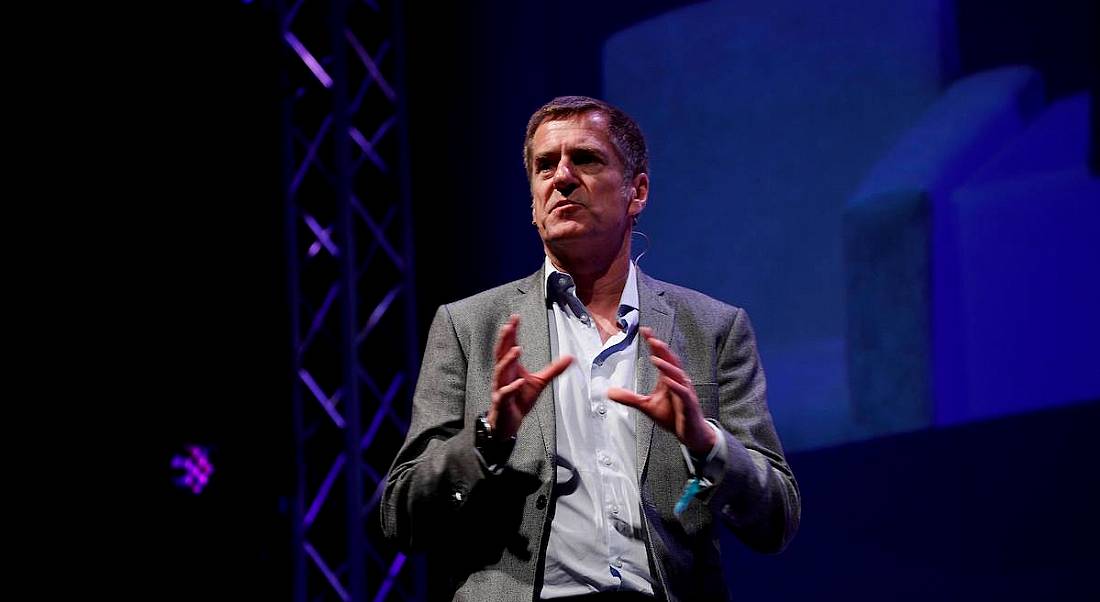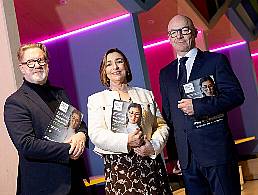Mark Curtis, Fjord co-founder and chief client officer – and Inspirefest 2016 speaker – tells us how design thinking can not only bring real human emotion into business, but it can also help forge the future of work.
The world is changing at a pace we’ve not witnessed since the industrial revolution. With the added uncertainty of Brexit and global political turmoil, the future has never been less predictable, particularly for businesses that are so exposed to outside influence. But from challenge emanates great opportunity, and, with advancements in design, technology and even ‘contentious’ artificial intelligence (AI), the workplace of the future is primed for disruption from within.
So what do organisations need to do to future-proof themselves against these outside sociopolitical, economic and sometimes geographical challenges? How can workplaces remain diverse in the face of a world battling for equality and sense of place? How will workers fare as AI and machine learning become more and more sophisticated? And, finally – the burning question – can organisations stay ahead of competitors without innovation?
Design your way to success
Design thinking is not a new concept. In fact, many of you may have already heard of it and even be using it within your business proposition. But what if I were to tell you that, while design thinking is great, it risks disappearing into the ether without the backing of ‘design doing’ and ‘design culture’?
At Fjord, we like to refer to the Rule of Three, which combines design thinking, design doing and design culture to really maximise the value of design in business.
Let me break it down: design thinking is when a group of innovative designers get together to solve an issue within an organisation. Going one step further, design doing is then about taking this solution-focused design thinking and collaborating with different stakeholders to actually create new services.
This brings me to the third, final, and probably most important, part of the design triangle: design culture.
To truly embed design culture within an organisation, you need to engage the hearts and minds of the back office, too. It’s not the designers you need to convince of the effectiveness of design thinking – they’re game – but HR, legal and even accounting. Without their buy-in, your organisation will not shift away from a sterile, conventional office environment, and design thinking will be rendered useless. But, if design forms part of a company culture, an organisation can incentivise and innovate from all departments.
Companies need to stop thinking that design culture is reserved solely for the tech world. Good design can transcend the overall business world, and must not, above all else, become a fad.
Give your business human emotions
As digital and technology are transforming people’s expectations of immediacy, customers are now becoming the vanguard of an increasing number of organisations. But adopting a customer-centric approach to business is not easy, and organisations must be able to change rapidly in response to the shifting business landscape – they need to become a ‘living business’.
A living business is just that: one that mimics human characteristics and is therefore responsive, emotive and ambitious. A living business needs to be able to shift its weight when the ground moves beneath it.
‘Businesses of the future face a new set of challenges, including ever-shifting consumer expectations, disruption from unprecedented places and lightning-speed technological advancements’
There’s only one way to do this: by applying a design approach and mindset that is both flexible and innovative to a company’s culture, putting employees and digital at the heart of everything you do.
Identifying where to start to get your organisation on track to becoming a living business involves delving beneath the surface to the heart of the problem, and understanding the need to be able to conform to a changing playing field. You need to take stock of what we at Fjord call the ‘vital signs’ – personality, instinct, craft and relationships – and think of your organisation as a living organism. If your company has personality, instinct, and the ability to build relationships and hone in on craft, then you’re more likely to identify and connect with your audiences, be they external or internal.
A living business will ultimately deliver an exceptional employee experience, by improving the way people work and giving them the right tools, support and freedom to excel. It puts people at the heart of everything it does, and embodies a culture that encourages innovation at every level from the top down and bottom up. Above all else, it will design with society in mind.
Will a bot take over my job?
AI and chatbots have certainly grabbed their fair share of media attention over the last year. We’ve seen the emergence of mainstream messaging apps – such as Slack – and other online bots, which have people questioning whether this form of AI will leave the future human workforce sidelined and without job prospects.
The truth is that while AI has matured, chatbots are still far from delivering a true human-to-human experience. Today’s bots are fairly simplistic in their delivery – they can only understand how to sort through data and learn how to make better decisions, interpreting and responding to an intended task. But this will change and AI will accelerate, particularly as it becomes an established part of an organisation’s design thinking, doing and culture.
In turn, this will drive a growing need for machine learning capabilities to become more emotionally intelligent, paving the way for the development of the next generation of digital services. This won’t necessarily mean fewer jobs for us human folk – that is yet to be seen – but it will certainly open up new employment opportunities as organisations start to hire a new breed of AI designers and developers to deliver better customer service.
There’s no doubt that businesses of the future face a new set of challenges, including ever-shifting consumer expectations, disruption from unprecedented places and lightning-speed technological advancements.
For companies in the firing line of all these changes, it’s imperative that they arm themselves with the necessary tools of a living business to survive: design and digital innovation. But, for a living business to grow, it must be supported by a robust design culture, and for machine learning to become emotionally intelligent, it will depend on a company with personality and instinct. All of these factors are, without a doubt, intrinsically linked.
By Mark Curtis
Mark Curtis is a serial entrepreneur and innovator who has worked in media, digital, mobile and design for 30 years. He co-founded service design consultancy Fjord in 2001. At Fjord (now part of Accenture Interactive), Curtis is chief client officer, and his role spans offer definition, marketing and business development. Curtis is a frequent speaker at conferences and commentator in the media. In 2005, he published Distraction – Being Human in the Digital Age, a book about the social effects of new technology.
Watch Mark Curtis explain Fjord’s Rule of Three at Inspirefest, Silicon Republic’s international event connecting sci-tech professionals passionate about the future of STEM. Book now to get your Early Bird tickets for Inspirefest 2017.




